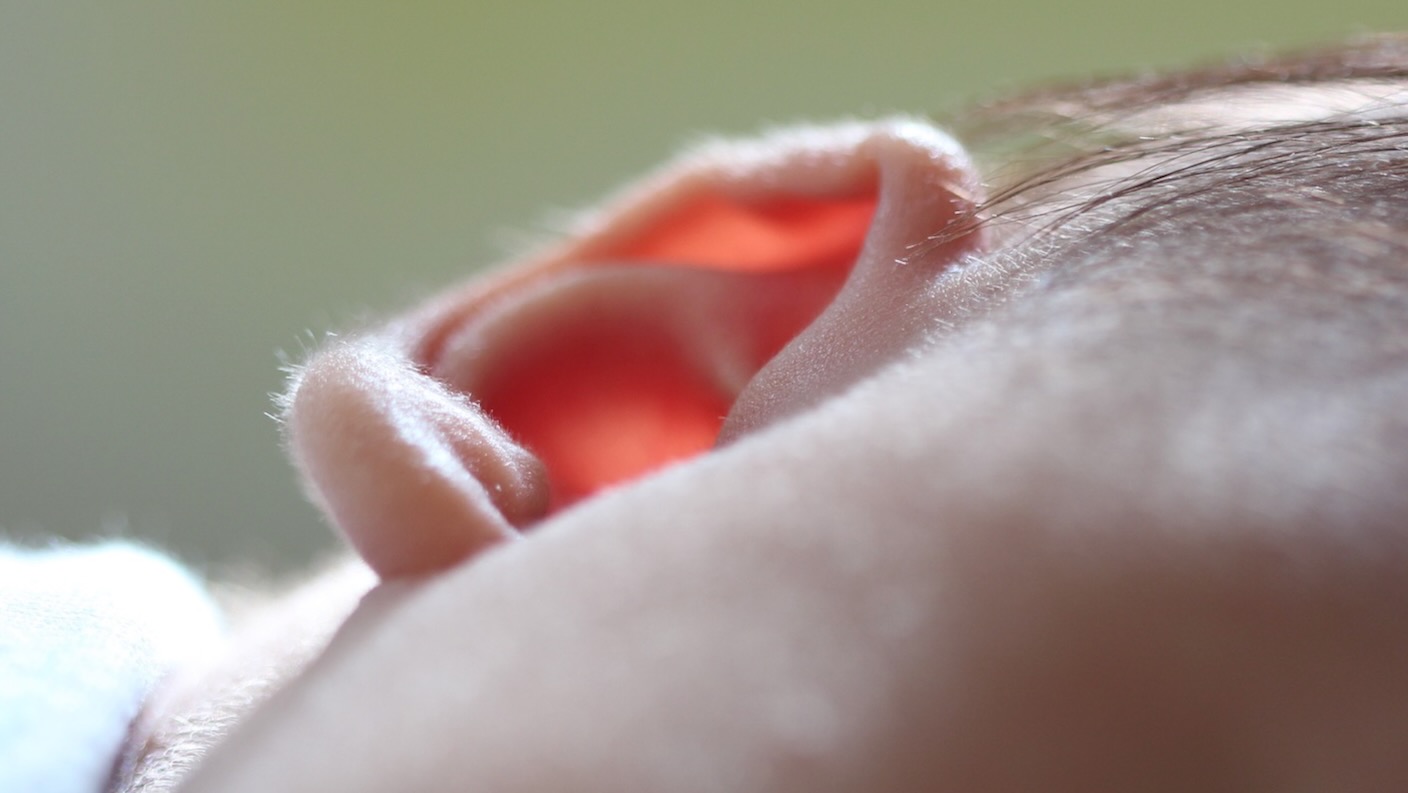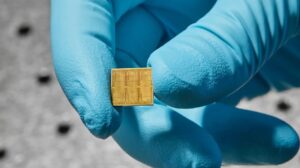
When Aissam Dam had the strange device connected to his ear, he had no idea it was going to change his life.
An 11-year-old boy, Aissam was born deaf due to a single gene mutation. In October 2023, he became the first person in the US to receive a gene therapy that added a healthy version of the mutated gene into his inner ear. Within four weeks, he began to hear sounds.
Four months later, his perception of the world had broadened beyond imagination. For the first time, he heard the buzzing of traffic, learned the timbre of his father’s voice, and wondered at the snipping sound scissors made during a haircut.
Aissam is participating in an ongoing clinical trial testing a one-time gene therapy to restore hearing in kids like him. Due to a mutation in a gene called otoferlin, the children are born deaf and often require hearing aids from birth. The trial is a collaboration between the Children’s Hospital of Philadelphia and Akouos, a subsidiary of the pharmaceutical giant Eli Lilly.
“Gene therapy for hearing loss is something physicians and scientists around the world have been working toward for over 20 years,” said Dr. John Germiller at the Children’s Hospital of Philadelphia, who administered the drug to Aissam, in a press release. “These initial results show that it may restore hearing better than many thought possible.”
While previously tested in mice and non-human primates, the team didn’t know if the therapy would work for Aissam. Even if it did work, they were unsure how it would affect the life of a deaf young adult—essentially introducing him to an entirely new sensory world.
They didn’t have to worry. “There’s no sound I don’t like…they’re all good,” Aissam said to the New York Times.
A Broken Bridge
Hearing isn’t just about picking up sounds, it’s also about translating sound waves into electrical signals our brains can perceive and understand.
At the core of this process is the cochlea, a snail-like structure buried deep inside the inner ear that translates sound waves into electrical signals that are then sent to the brain.
The cochlea is a bit like a roll-up piano keyboard. The structure is lined with over 3,500 wiggly, finger-shaped hairs. Like individual piano keys, each hair cell is tuned to a note. The cells respond when they detect their preferred sound frequency, sending electrical pulses to the auditory parts of the brain. This allows us to perceive sounds, conversations, and music.
For Aissam and over 200,000 people worldwide, these hair cells are unable to communicate with the brain from birth due a mutation in a gene called otoferlin. Otoferlin is a bridge. It enables the hair cells lining the cochlea to send chemical messages to nearby nerve fibers, activating signals to the brain. The mutated gene cuts the phone line, leading to deafness.
Hearing Helper
In the clinical trial, scientists hoped to restore the connection between inner-ear cells and the brain using a gene therapy to add a dose of otoferlin directly into the inner ear.
This was not straightforward. Otoferlin is a very large gene, making it difficult to directly inject into the body. In the new trial, the team cleverly broke the gene into two chunks. Each chunk was inserted into a safe viral carrier and shuttled into the hair cells. Once inside the body, the inner-ear cells stitched the two parts back into a working otoferlin gene.
Developing therapies for the inner ear is delicate work. The organ uses a matrix of tissues and liquids to detect different notes and tones. Tweaks can easily alter our perception of sound.
Here, the team carefully engineered a device to inject the therapy into a small liquid-filled nook in the cochlea. From there, the liquid gene therapy could float down the entire length of the cochlea, bathing every inner hair in the treatment.
In mice, the treatment amped up otoferlin levels. In a month, the critters were able to hear with minimal side effects. Another test in non-human primates found similar effects. The therapy slightly altered liver and spleen functions, but its main effects were in the inner ear.
A major hiccup in treating the inner ear is pressure. You’ve likely experienced this—a quick ascent on a flight or a deep dive into the ocean makes the ears pop. Injecting liquids into the inner ear can similarly disrupt things. The team carefully scaled the dose of the treatment in mice and non-human primates and made a tiny vent so the therapy could reach the whole cochlea.
Assessing non-human primates a month after treatment, the team didn’t detect signs of the gene therapy in their blood, saliva, or nasal swab samples—confirming the treatment was tailored to the inner ear as hoped and, potentially, had minimal side effects.
A Path Forward
The trial is one of five gene therapy studies tackling inherited deafness.
In October last year, a team in China gave five children with otoferlin genetic defects a healthy version of the gene. In a few months, a six-year-old girl, Yiyi, was able to hear sounds at roughly the volume of a whisper, according to MIT Technology Review.
The gene therapy isn’t for everyone with hearing loss. Otoferlin mutations make up about three percent of cases of inherited deafness. Most children with the mutation don’t completely lose their hearing and are given cochlear implants to compensate at an early age. It’s still unclear if the treatment also helps improve their hearing. However, a similar strategy could potentially be used for others with genetic hearing disorders.
For Yiyi and Aissam, who never had cochlear implants, the gene therapy is a life-changer. Sounds were terrifying at first. Yiyi heard traffic noises as she slept at night for the first time, saying it’s “too noisy.” Aissam is still learning to incorporate the new experience into his everyday life—a bit like learning a new superpower. His favorite sounds? “People,” he said through sign language.
Image Credit: tung256 / Pixabay
- SEO Powered Content & PR Distribution. Get Amplified Today.
- PlatoData.Network Vertical Generative Ai. Empower Yourself. Access Here.
- PlatoAiStream. Web3 Intelligence. Knowledge Amplified. Access Here.
- PlatoESG. Carbon, CleanTech, Energy, Environment, Solar, Waste Management. Access Here.
- PlatoHealth. Biotech and Clinical Trials Intelligence. Access Here.
- Source: https://singularityhub.com/2024/01/25/a-child-born-deaf-can-hear-for-the-first-time-thanks-to-pioneering-gene-therapy/
- :is
- :not
- $UP
- 000
- 20
- 20 years
- 200
- 2023
- 500
- a
- Able
- About
- According
- activating
- add
- added
- administered
- affect
- After
- age
- aids
- All
- allows
- also
- altered
- an
- and
- Another
- ARE
- around
- AS
- ascent
- At
- back
- BE
- became
- been
- began
- Better
- between
- Beyond
- BEYOND IMAGINATION
- birth
- Bit
- blood
- body
- born
- Brain
- BRIDGE
- Broke
- Broken
- but
- Buzzing
- called
- CAN
- carefully
- cases
- cell
- Cells
- change
- chemical
- child
- Children
- China
- Clinical
- collaboration
- communicate
- completely
- connected
- connection
- conversations
- Core
- could
- credit
- cuts
- deep
- deep dive
- detect
- device
- DID
- different
- difficult
- directly
- disorders
- Disrupt
- dive
- Dont
- dose
- down
- dr
- drug
- due
- during
- each
- Early
- easily
- effects
- enables
- engineered
- Entire
- entirely
- Even
- Every
- everyday
- everyone
- experience
- experienced
- Favorite
- few
- fibers
- First
- first time
- five
- flight
- Float
- For
- found
- four
- Frequency
- from
- functions
- gave
- genetic
- giant
- Girl
- given
- going
- good
- had
- Hair
- Have
- he
- healthy
- hear
- heard
- hearing
- helps
- him
- his
- hospital
- How
- However
- HTML
- HTTPS
- i
- idea
- if
- imagination
- improve
- in
- incorporate
- individual
- initial
- inject
- inner
- inside
- into
- introducing
- IT
- ITS
- John
- just
- keys
- kids
- Know
- language
- large
- Last
- Last Year
- leading
- learned
- learning
- Length
- levels
- Life
- like
- likely
- Line
- lined
- lining
- Liquid
- Liver
- lose
- loss
- made
- Main
- major
- make
- MAKES
- Making
- many
- Matrix
- May..
- messages
- minimal
- Month
- months
- most
- Music
- nasal
- never
- New
- New York
- night
- NIH
- no
- note
- Notes
- ocean
- october
- of
- often
- on
- once
- ONE
- ongoing
- or
- Others
- our
- over
- participating
- parts
- path
- People
- percent
- perception
- person
- Pharmaceutical
- Philadelphia
- phone
- picking
- Pioneering
- plato
- Plato Data Intelligence
- PlatoData
- pop
- possible
- potentially
- preferred
- press
- Press Release
- pressure
- previously
- process
- Quick
- reach
- receive
- release
- require
- Respond
- restore
- Results
- roll-up
- roughly
- safe
- Saliva
- saying
- scientists
- send
- sending
- sent
- she
- show
- side
- sign
- signals
- Signs
- similar
- Similarly
- single
- small
- So
- something
- Sound
- sounds
- Still
- straightforward
- strange
- Strategy
- structure
- studies
- subsidiary
- superpower
- tackling
- tailored
- team
- Technology
- terrifying
- test
- tested
- Testing
- than
- Thanks
- that
- The
- the world
- their
- then
- therapies
- therapy
- There.
- These
- they
- things
- this
- thought
- three
- Through
- time
- to
- toward
- traffic
- treating
- treatment
- trial
- tuned
- tweaks
- two
- unable
- understand
- us
- used
- uses
- using
- version
- very
- viral
- Voice
- volume
- was
- waves
- were
- when
- Whisper
- WHO
- whole
- with
- Work
- working
- world
- worldwide
- worry
- would
- year
- years
- york
- young
- zephyrnet













